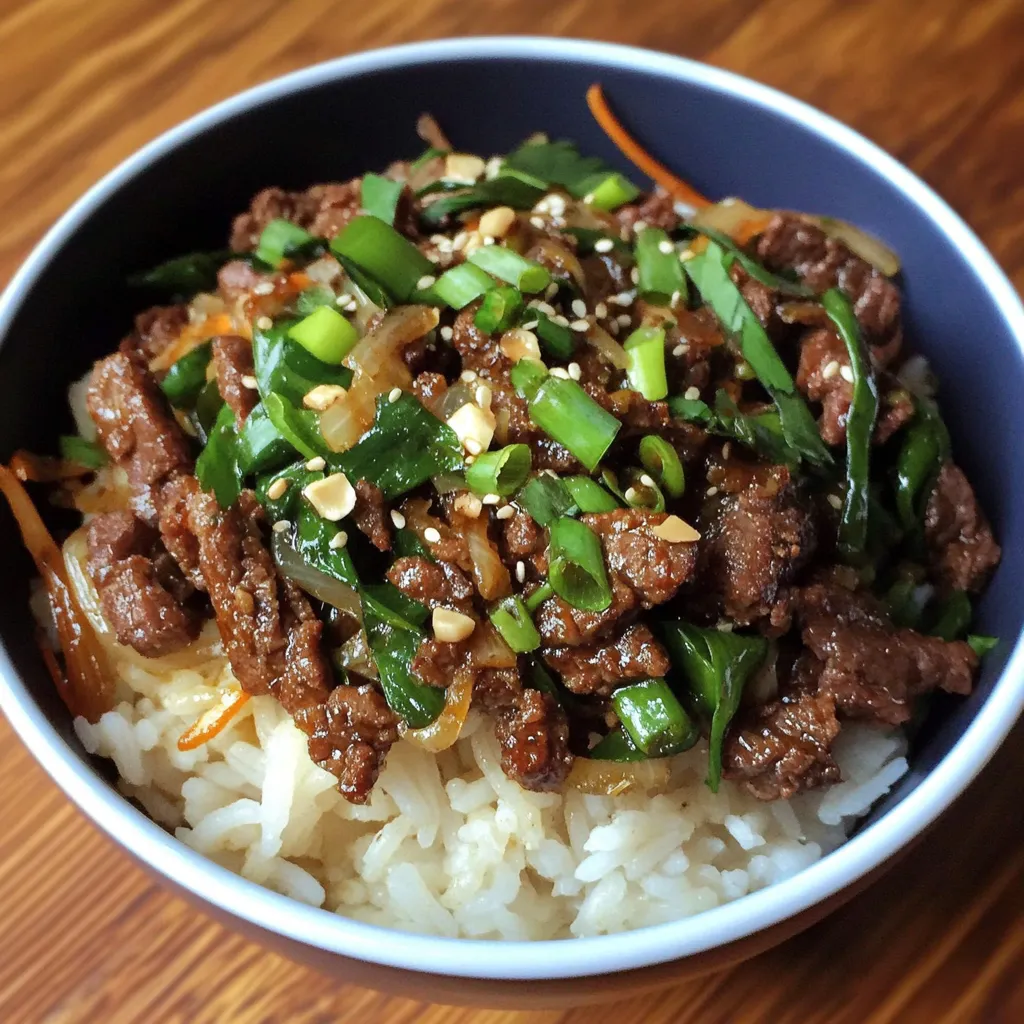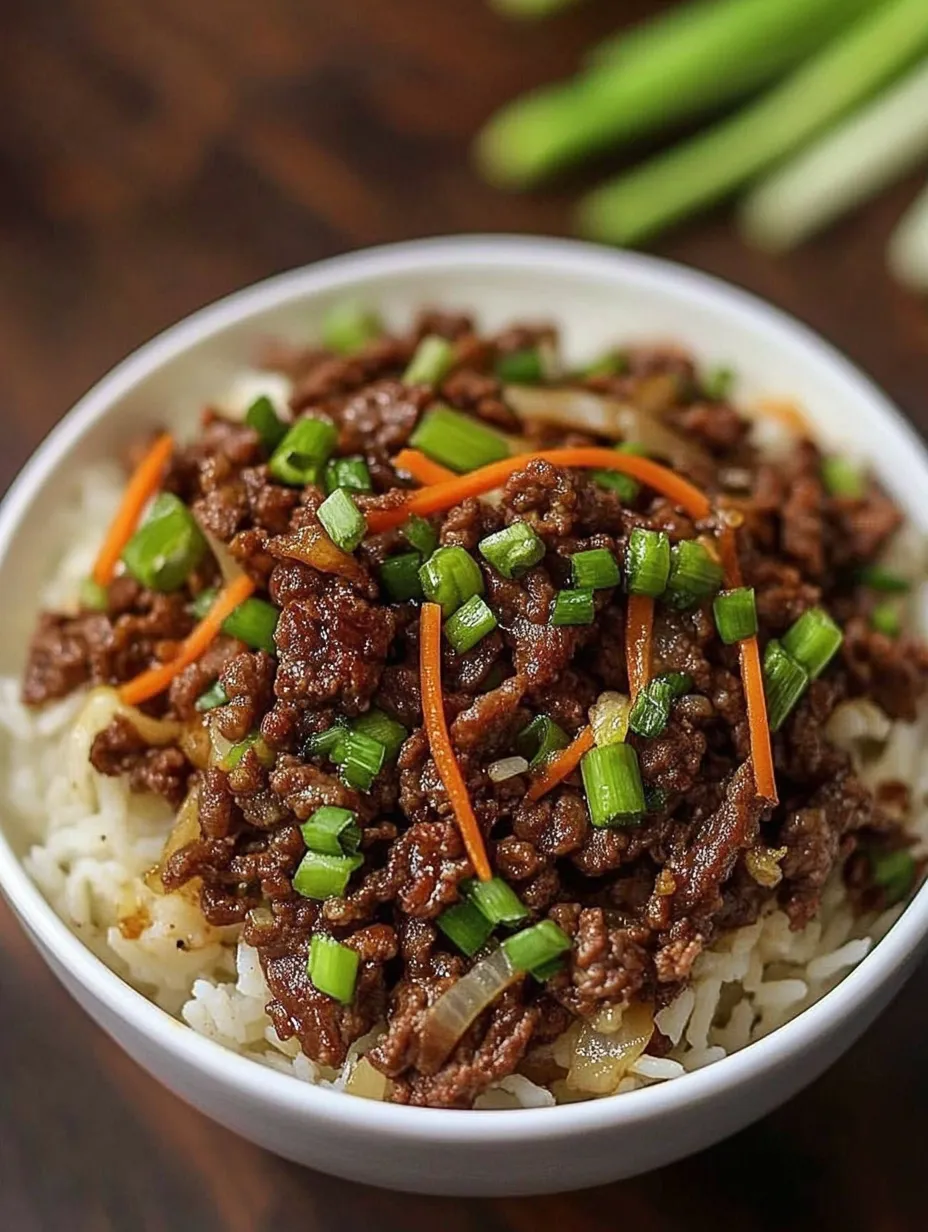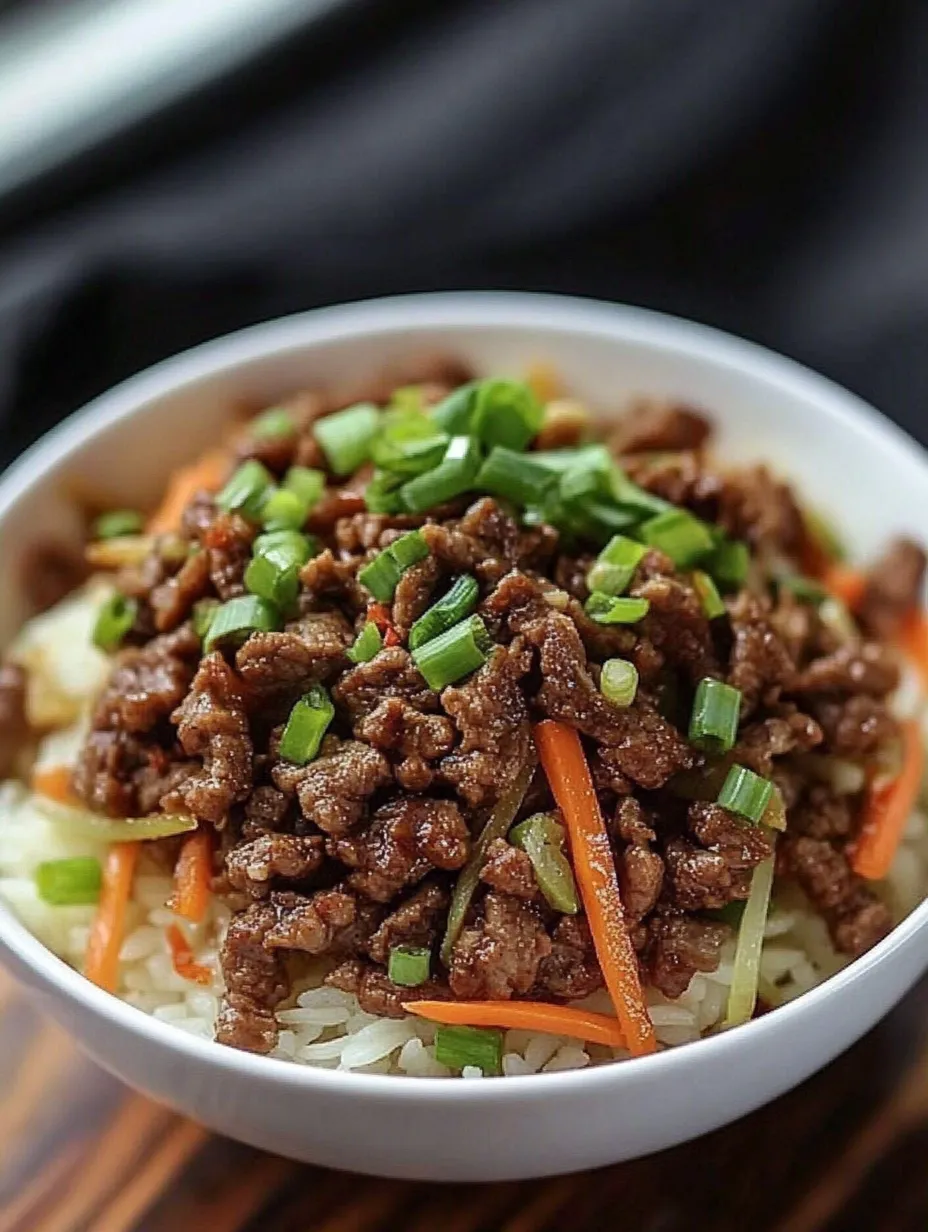 Save
Save
This Asian garlic beef bowl has been my family's go-to weeknight dinner for years, combining savory ground beef with aromatic ginger, garlic, and the perfect balance of soy sauces, all served over steaming rice.
I first developed this recipe when my children started getting picky about vegetables. The sweet and savory sauce masks the healthy additions so well that they clean their plates every time, and now it's our most requested meal when everyone's home for dinner.
Ingredients
- Ground beef choose 80/20 for best flavor, or leaner if preferred
- Light soy sauce provides saltiness and umami flavor
- Dark soy sauce adds richness and beautiful color to the dish
- Grated ginger fresh is best for bright, zingy flavor
- Minced garlic use fresh for the most aromatic result
- Brown sugar balances the saltiness with subtle sweetness
- Cornstarch creates the perfect sauce thickness
- Mung bean sprouts add crunch and freshness
- Shredded carrots provide sweetness and vibrant color
- Spring onions give a mild onion flavor and beautiful garnish
- Rice jasmine or medium grain works perfectly
Step-by-Step Instructions
- Brown the Beef
- Cook the ground beef in a hot skillet until completely browned, breaking it into small pieces as it cooks. This should take about 7 minutes. Once cooked, drain excess fat and pat the meat dry with paper towels to prevent a greasy sauce. Return the beef to the skillet and reduce heat to low.
- Prepare the Sauce
- While the beef is cooking, combine both light and dark soy sauces in a small bowl with the freshly grated ginger, minced garlic, and brown sugar. Whisk until the sugar begins to dissolve. Add the cornstarch and continue whisking until completely smooth with no lumps. The sauce will appear quite thin but will thicken dramatically once heated.
- Combine Beef and Sauce
- Pour the prepared sauce over the cooked ground beef in the skillet and stir continuously for about 1 minute. The sauce will begin to thicken and coat the meat beautifully. Make sure every piece of beef is evenly covered in the glossy sauce.
- Add Vegetables
- Add the mung bean sprouts first and stir for about 3 minutes until they just begin to soften but still maintain some crunch. Then incorporate the shredded carrots and diced spring onions, stirring to distribute them evenly throughout the beef mixture.
- Steam to Finish
- Remove the skillet from heat completely and cover with a tight fitting lid. This gentle steaming step is crucial as it allows the vegetables to soften slightly without overcooking them. Let everything rest for exactly 3 minutes to marry the flavors while maintaining textural contrast.
- Serve
- Spoon the beef mixture over freshly cooked rice in individual bowls. Reserve some fresh spring onions to scatter on top for color and a fresh flavor boost.
 Save
Save
The dark soy sauce is my secret ingredient in this recipe. Many home cooks skip it and just use regular soy sauce, but that deep, almost molasses like richness it adds makes all the difference. My grandmother taught me this distinction when I was learning to cook authentic Asian dishes, and it's a lesson I've never forgotten.
Make Ahead and Storage
This garlic beef keeps exceptionally well, making it perfect for meal prep. Store it in airtight containers in the refrigerator for up to 4 days. The flavors actually deepen overnight, making leftovers sometimes even better than the fresh batch. When reheating, add a splash of water if the sauce has thickened too much in storage. For longer storage, this dish freezes beautifully for up to 3 months. Portion into individual servings before freezing for quick thaw lunches.
Customize Your Bowl
The beauty of this recipe lies in its flexibility. The base sauce works wonderfully with ground turkey or chicken for a lighter option. Vegetarians can substitute crumbled firm tofu or tempeh. For vegetables, try adding steamed broccoli florets, sliced mushrooms, or diced bell peppers. Some families enjoy a bit of heat, so add a teaspoon of chili garlic sauce or sriracha to the sauce mixture. For a complete meal, consider adding a fried egg on top, where the runny yolk creates an additional rich sauce element.
Serving Suggestions
While perfectly delicious on its own over white rice, this garlic beef can be elevated for guests or special occasions. Serve it in lettuce cups as appetizers, or create a build your own bowl station with various toppings like crushed peanuts, cilantro, lime wedges, and fried shallots. For a lower carb option, serve over cauliflower rice or in lettuce wraps. This dish pairs beautifully with a simple cucumber salad dressed with rice vinegar and sesame oil to cut through the richness of the beef.
 Save
Save
Recipe FAQs
- → What can I substitute for mung bean sprouts?
If mung bean sprouts aren't available, you can substitute with thinly sliced cabbage, snow peas, or bamboo shoots. Each will add a similar crunch while maintaining the Asian flavor profile of the dish.
- → Is there a difference between light and dark soy sauce?
Yes, light soy sauce is thinner, saltier, and lighter in color, while dark soy sauce is thicker, slightly sweeter, and adds a deeper color to dishes. If you only have one type, you can use all light soy sauce but reduce the amount slightly to control saltiness.
- → Can I make this dish ahead of time?
Yes, this beef bowl keeps well in the refrigerator for 3-4 days. Store the beef mixture separately from the rice for best results, and reheat gently on the stovetop or microwave when ready to serve.
- → What protein can I use instead of ground beef?
Ground chicken, turkey, or pork work well as alternatives. For a vegetarian version, try crumbled firm tofu or tempeh - just adjust cooking times accordingly as these proteins cook faster than beef.
- → What type of rice pairs best with this dish?
Jasmine or long-grain white rice complements this dish perfectly, but brown rice, cauliflower rice, or even noodles can be substituted based on preference. The neutral base helps showcase the flavorful beef mixture.
- → How can I adjust the spice level?
Add red pepper flakes, sriracha, or a tablespoon of gochujang (Korean chili paste) to the sauce for heat. Start with a small amount and adjust to your preference. You can also serve with chili oil on the side.
